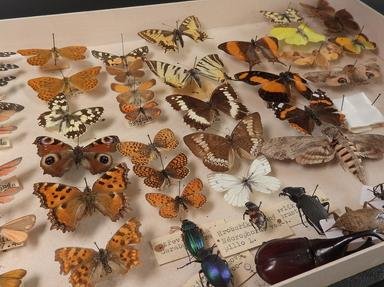Quiz Answer Key and Fun Facts
1. Anopheles albimanus, pictured here, is a member of the Anopheles genus of insects, many of which can transmit malaria to humans because they carry a Plasmodium parasite. What is the common name for the family Culicidae to which it belongs?
2. The common housefly is considered a pest because it can contaminate food, not to mention the mess it can make of food if the female manages to lay eggs on it. What is the scientific name for this little nuisance?
3. This is a picture of Tineola bisselliella, an insect whose larval form is more commonly to blame for the damage associated with this species than is the adult shown. What are they commonly called?
4. Lepisma saccharina gets its scientific name from the fact that its favorite foods are sugars and starches. Its common name, however, is based on its usual appearance. Which of these is it?
5. Members of a number of species in the genus Solenopsis are called fire ants, both because of their reddish color and because of their ability to inflict pain on humans. What is the mechanism by which they create painful wounds?
6. Wasps are said to be paraphyletic, which means they are defined as all members of their suborder (Aprocrita) which are NOT also members of some other specified members of that group; in this case, the excluded insects are ants and bees.
7. Which of these insects is in the same genus as the short-horned grasshopper pictured?
8. All honey-producing bees are members of the species Apis mellifera.
9. It may not be your choice for a pet, but Gromphadorhina portentosa, one of the largest species of cockroach, is indeed sometimes kept as an exotic pet. By what name is it more commonly known?
10. When you say butterfly, many people will immediately visualise a monarch butterfly, as shown here. Another common name for them is based on the plants which the caterpillar stage feeds on. Which of these is it?
Source: Author
looney_tunes
This quiz was reviewed by FunTrivia editor
rossian before going online.
Any errors found in FunTrivia content are routinely corrected through our feedback system.

